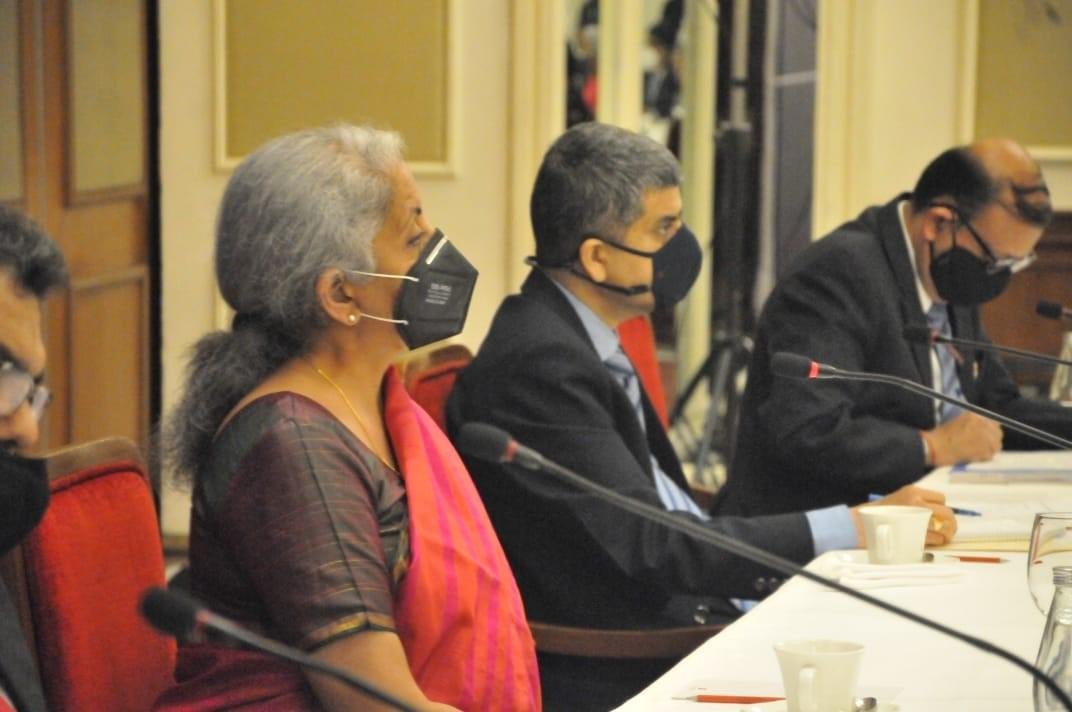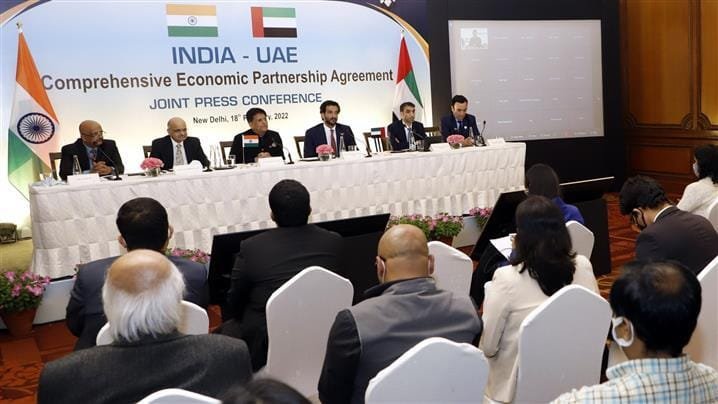The Trans-Pacific Partnership (TPP) will have multiple impacts on India and South Asia, ranging from a short-term effect, such as the loss of preferential access for exports, to the longer-term impact of having to comply with higher quality-standards. The most significant impact, however, can be the gradual isolation of South Asia from a significant part of global trade governed by new rules, write Dr Amitendu Palit.
The Trans-Pacific Partnership (TPP) will be formalised soon, with the United States Senate granting US President Barack Obama the fast-track Trade Promotion Authority (TPA) for implementing new free trade agreements. The Senate vote cleared one of the most important hurdles for the TPP. The remaining talks on the trade deal can now be concluded fast, as all negotiating countries look forward to its early commencement.
The TPP will be a game-changer for the world economy and global trade. As one of the most important mega-RTAs (Regional Trade Agreements) in the world economy, the TPP will introduce new rules and systems for global trade. With its 12 members (Australia, Brunei, Canada, Chile, Japan, Malaysia, Mexico, New Zealand, Peru, Singapore, the US and Vietnam) accounting for around two-fifths of the world output and a quarter of global trade, the TPP’s rules and writ will cover large chunks of the world economy and trade. Many of the same rules might also be implemented under other mega-RTAs that are being currently negotiated, as well as under new bilateral trade agreements.2
The TPP has implications for several countries including India and others from South Asia. Given that several TPP member-economies are major trade partners of South Asian countries, these impacts would have both short-term and long-term implications, spread over time.
Loss of Preferential Market Access
The TPP is expected to make around 11,000 tariff lines duty-free for its members. This wide-ranging tariff elimination will affect the competitiveness of these exports from countries that currently enjoy duty-free access in the TPP member-markets. The biggest erosion of competitiveness will be in the US market. The US offers duty-free access to around 5,000 items of export from developing countries under its Generalized System of Preferences (GSP). The preferences apply to all countries from South Asia. Nondeveloping-country TPP members like Australia, Brunei, Japan and New Zealand, which do not have these preferences now, might get duty-free access for many of the products covered by the GSP scheme. Moreover, non-preference-receiving exports from India and other South Asian countries to the US would be affected by the fact that, while their exports will attract duties, similar exports from other TPP members to the US will not.
The Trans-Atlantic Trade and Investment Partnership (TTIP), Pacific Alliance (PA) and the Regional Comprehensive Economic Partnership (RCEP) are the other major mega-RTAs being negotiated. Several TPP members figure in these negotiations. New bilateral trade agreements like the Canada-EU and China-Australia trade pacts arguably contain several provisions that are there in the TPP as well.
Tariff-preference erosion is a particularly serious concern for South Asian LDCs (Least Developed Countries) – Afghanistan, Bangladesh, Bhutan and Nepal – that receive additional preferential access in several TPP member-markets. The GSP schemes of Australia, Canada, Japan, New Zealand and the US allow greater preferential access to exports from the LDCs. These preferences, extended over a greater number of items than for other developing countries, can now get offset to a large extent by tariff eliminations under the TPP. These can result in fairly serious implications for the prospects of some major exports from South Asian LDCs, such as textiles and garments. Garment exports from a competing country which is also a TPP member, like Vietnam, for example, can pose significant challenges for the South Asian LDCs, given the much greater access it will get in the Asia-Pacific TPP markets (e.g. US, Canada, Australia, Japan) that are among the top destinations of the South Asian LDC garment-exports as well.
India’s specific concerns over tariff-preference erosion will extend to the preferential accesses for its exports through the various bilateral and regional agreements it already has with many TPP members. These include bilateral agreements with Chile, Japan, Malaysia, Peru and Singapore. It also gets preferential access to the markets of Brunei and Vietnam through its agreement with the ASEAN (Association of Southeast Asian Nations). Significant preferential market access, in the form of zero or low tariffs currently available to Indian exports through these agreements, can be neutralised postTPP. Furthermore, India’s existing trade agreements with these TPP members are much narrower than what the TPP will cover in terms of the number of goods that are likely to be made tariff-free. As a result, there will be several Indian exports, both agriculture and manufacturing and including final products, raw materials and intermediates that are expected to continue facing tariffs in these TPP markets, whereas these are likely to become duty-free for all TPP members.
Complying with Tougher Quality Standards
Given that global tariffs are coming down through various regional and bilateral trade agreements, in addition to phased reductions through the multilateral process of the World Trade Organization, tariff-preference erosion from the TPP will be a relatively short-term effect. What can, however, be far more significant for the excluded countries are the effects of higher quality-standards being adopted under the TPP. These standards are expected to be implemented through strict norms for ensuring health and safety of plants, animals, people and the environment. The TPP will implement a series of common standards for its members in this regard. By and large, these standards are likely to reflect those already prevalent in the US and other major TPP member-markets.
High quality-standards, key to gaining market share, have several implications for exports from India and other South Asian countries. Indian and South Asian exports have struggled to meet high standards of developed country markets due to various factors including lack of adequate knowledge of standards, insufficient domestic capacities for standardisation and lack of awareness among both producers and consumers. Several exports from South Asia – agricultural products, fisheries and marine products, minerals, chemicals, leather, textiles and garments, jewellery, metals, mechanical and electrical items – will now have to comply with progressively higher standards in the TPP markets. Such compliance calls for the institutionalisation of higher quality-standards in their domestic markets, in the first instance. The quality standards of the TPP might be more demanding than the basic global standards as fixed by the ISO (International Standards Organisation), given the active role of private industry in fixing these standards. The challenge for India and other South Asian countries will be to continuously upgrade their domestic standards. This is going to be particularly difficult in the areas of food-safety management and carbon-emission norms. For India, these challenges are going to be particularly critical as it aims to integrate deeper in global value chains through ambitious initiatives like ‘Make in India’. High standards would be major imperatives for Indian producers both as suppliers of intermediates as well as processors of final products.
Several South Asian LDCs are yet to develop domestic testing and certification capacities for satisfying high quality-standards. The absence of such facilities is likely to reduce market access for their exports to the TPP markets. Such access will be less globally over time, given that more and more economies might shift to the standards being set by the TPP. Even for India, the largest economy in South Asia, certification capacities must expand far more beyond what is currently available with the BIS (Bureau of Indian Standards). At the same time, the standards for the domestic market will also have to be upgraded and enforced. Large gaps between the domestic and the TPP standards might force exporters towards suboptimal choices.
Absence from the New Trade Governance
The TPP symbolises mega-RTAs aspiring for ‘deep’ trade liberalisation; such liberalisation goes well beyond the cutting of tariffs and into the realm of reforming domestic regulations in sectors that influence cross-border trade in goods and services, and flows of capital, people, technology and knowledge. The TPP is bound to bring in significant changes in the rules governing investments, intellectual property, competition, state procurement, investor-state disputes, labour laws and the environment-management policies of its member-economies. Most of these are areas that the WTO has refrained from legislating on, given their political and social sensitivities for the members. But as the TPP countries, some of which are among the world’s largest economies and trading nations, adopt these regulations, the latter would come to govern a significant part of the global trade.
India has been uncomfortable in discussing and negotiating many of the issues taken up by the TPP. But it can no longer avoid these, given that the TPP will influence other ongoing trade negotiations. Foremost among these is the RCEP (Regional Comprehensive Economic Partnership).3 Despite their far-more moderate ambitions than the TPP, the RCEP negotiations are not immune to the TPP’s influence, because it has several common members (Australia, Brunei, Japan, Malaysia, New Zealand, Singapore and Vietnam). The RCEP is being negotiated across such areas as investment, competition policy and intellectual property issues; the evolving framework of rules in the TPP could well influence the RCEP’s course of negotiations on these subjects. Furthermore, India is also likely to experience the pressure of negotiating these issues in its ongoing bilateral trade talks with the TPP members such as Australia and Canada.
The RCEP is being negotiated by the ten-member ASEAN, Australia, China, Japan, India, New Zealand and South Korea.
Conclusion
The impact of the TPP on India and South Asia will be much more than the short-term tariff-preference erosions for the region’s exports. The effects are likely to include the challenges of upgrading to new quality standards of the TPP markets and developing long-term strategies for negotiating ‘new’ issues in trade governance.
India’s Foreign Trade Policy (2015-2020), while noting the advent and some of the implications of the TPP, does not spell out any clear strategies for addressing these. But it is essential for India to do so. Otherwise, Indian exports will face increasingly adverse prospects in the TPP markets, as well as in the markets of countries that are negotiating other mega-RTAs, like the EU. A lack of strategic vision for mega-RTAs like the TPP can gradually isolate India and South Asia from a significant part of the global trade space. With much of world trade beginning to fix comparative advantages of national producers on satisfaction of high quality standards and domestic institutional reforms in their countries across a wide range of cross-cutting ‘WTO plus’ issues, India must look closely at the global trade agenda set by the TPP for staying relevant in world trade.
Dr Palit is Senior Research Fellow and Research Lead (Trade and Economic Policy) at the Institute of South Asian Studies (ISAS) at the National University of Singapore (NUS).
fii-news.com









